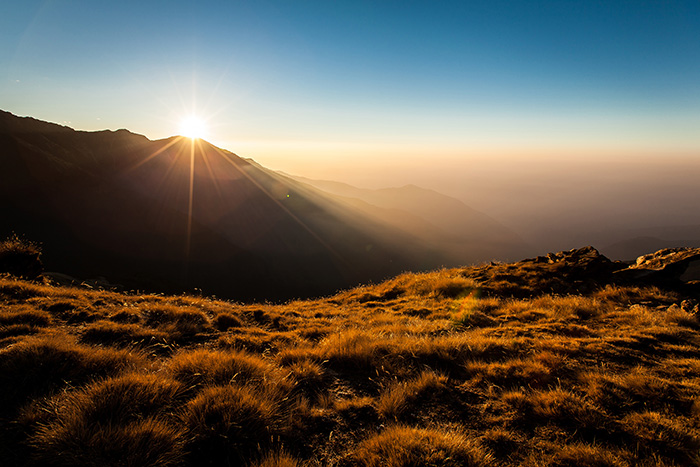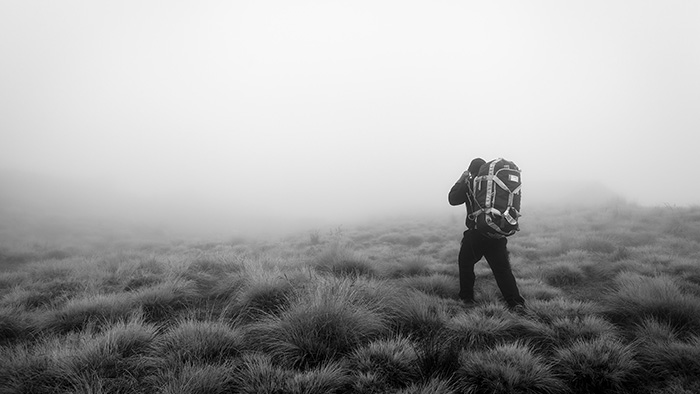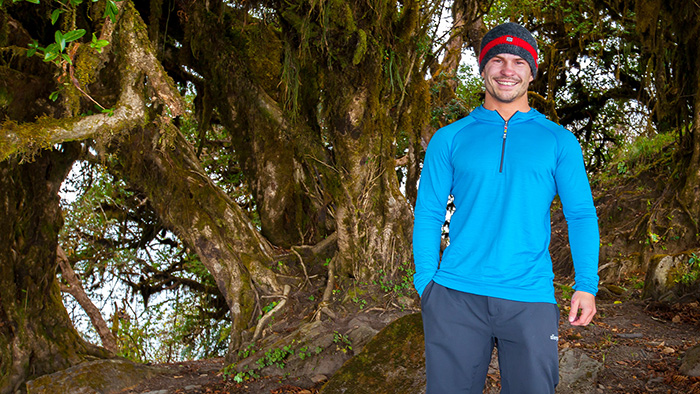Have you ever been on a beautiful scenic trek, but as you look through your photos you quickly realise that they are not that exciting and they fail to capture the same emotion that you had when you took the photo? Because I know I have been in that situation and I would like to share with you some quick tips to help improve your photography skills while enjoying your favourite outdoor activities.
We are very lucky in this day and age to be able to take great photos with a simple smart phone. It’s very convenient since it’s lightweight and it easily fits in your pocket compared to a bulky DSLR.
Here are few of the basic fundamentals for composing a memorable photo:
The Rule of Thirds Template
The Rule of Thirds
This is probably the most well known principle for composition. When you’re composing your shot you should think about where your subject will be in the frame. The basic idea of the rule of thirds is to divide the frame into thirds with two horizontal lines and two vertical lines that divide the frame into nine sections.

Ama Dablam along the way to Everest Base Camp (Example for Rule of Thirds)
Luckily, most cameras and smart phones give you the option to turn on this grid that will allow you to precisely align your subject within the frame by using the lines and the sections to create a balanced composition. Over time you will eventually get used to knowing how to frame a shot and you will not need to keep the grid constantly turned on when taking photos.
Your subject should be on either the right or left vertical line on the grid and covering at least four of the sections so the photo looks more natural to the viewer. This also allows your main subject to be in foreground to the side so you have enough room in the frame to see the extra details in the background (negative space). To make a photo even better you should try to have a distance between the main subject and the background so that the main subject is in focus but the background is blurry. This is called depth of field – but that is a tip for another day! When taking landscape photos you should line up the horizon with the horizontal lines so there is a good balance between the sky and the scenery.

Sunrise at High Camp on the way to Mardi Himal Base Camp (example for Rule of Thirds lining up the horizon)
This doesn’t mean that you need to stick to this rule by having the subject to the left or right all the time when you take a photo. You can absolutely break the rules but you must first understand them before you start experimenting with different shots and angles. For instance, you can place the subject in the centre of the frame (when it’s appropriate) to make the subject appear more powerful compared to having the subject to the side.

Our guide Sumi leading the way through the dense fog (example for lead room)
Lead Room
This rule is also known as looking room and it focuses on leaving space in the direction the subject is facing or moving. If the subject is on the left of the frame then they should be looking to the right of the frame to give a natural feel as they are looking into the open space in front of them. If the subject is on the right and looking to the right of the frame it wouldn’t look good as they are looking towards the edge of the frame and the empty space is behind them.
By following these basic techniques you will be able to take incredible photos with your camera when you’re out on your next adventure. It’s also great to select your favourite photo from a trek and get it framed rather than just keeping it hidden on a hard drive, and then you can proudly share and view your captured memories.

Our head gudie Madan enjoying the scenery (example for head room)
Head Room
Now that you understand the principles of the rule of thirds, you need to know about how much room should be left between the top of your subject and the top of the frame. Too much or too little room can affect the visual aesthetics of the image. Too much head room can make your subject look less significant in the photo and creates a dead space in the photo that does not have any interesting elements to it. Too little head room can result in your subject being cropped out of the photo, which doesn’t look that pleasant.
![]()
Stopping for a quick photo on the iconic Hilary Bridge (example of head room with a lot of space)
However, like the rule of thirds you can break this rule if you wish to convey a certain feeling in the photo. For example you can have wide shots of mountains/ scenery and a person standing with a lot of head room to signify how small the person is compared to nature.

Ryan Campbell is a filmmaker and photographer for Mountain Quests and has a Degree in Film-making. Contact Ryan at ryancampbell@mountainquests.com


